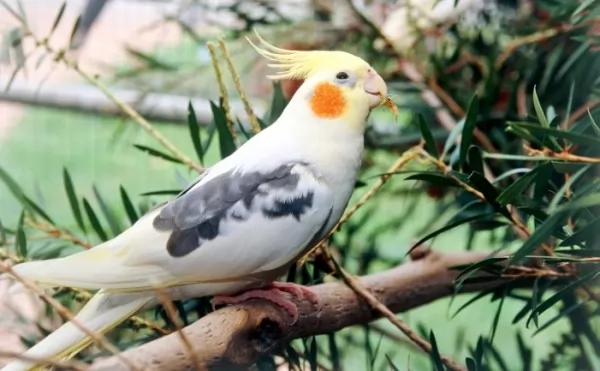
Lovebirds are small, colorful parrots that are known for their affectionate behavior and strong pair bonds. Breeding lovebirds can be a rewarding experience for bird enthusiasts, but it requires careful planning and knowledge of their unique breeding habits. In this article, we will explore the various aspects of breeding lovebirds, including their breeding behavior, suitable breeding conditions, and tips for successful breeding.
The Breeding Behavior of Lovebirds
Lovebirds are monogamous birds, meaning they form long-term pair bonds with their mates. Once a pair is formed, they will engage in various courtship behaviors, such as mutual preening, feeding each other, and vocalizing together. These behaviors strengthen their bond and prepare them for breeding.
Lovebirds are cavity nesters, which means they prefer to nest in enclosed spaces. In the wild, they often choose tree hollows or crevices in rocks as their nesting sites. In captivity, they can be provided with nest boxes or breeding cages that mimic these natural nesting environments.
Choosing the Right Pair
When breeding lovebirds, it is important to choose a compatible pair. Lovebirds are known to be selective when it comes to choosing their mates, and not all pairs will successfully bond. It is recommended to introduce potential mates to each other gradually and observe their behavior. Signs of compatibility include mutual grooming, feeding, and spending time together.
It is also important to consider the age and health of the birds. Breeding lovebirds should be at least one year old to ensure they are sexually mature. Additionally, both birds should be in good health and free from any genetic or hereditary diseases.
Creating Suitable Breeding Conditions
Providing the right breeding conditions is crucial for successful lovebird breeding. Here are some key factors to consider:
Nest Box or Breeding Cage
A suitable nest box or breeding cage is essential for lovebird breeding. The size of the nest box should be appropriate for the species of lovebirds you are breeding. It should be spacious enough for the birds to move comfortably but not too large to prevent them from feeling secure.
The nest box should have a small entrance hole to mimic the natural nesting sites of lovebirds. It should also have a removable top or side panel for easy access and cleaning.
Bedding Material
Lovebirds prefer nesting materials such as wood shavings, shredded paper, or coconut fiber. These materials provide insulation and comfort for the eggs and chicks. Avoid using materials that may be harmful, such as cedar shavings or toxic plants.
Temperature and Humidity
Lovebirds thrive in temperatures between 70-80°F (21-27°C). Maintaining a stable temperature is important for successful breeding. Avoid exposing the birds to extreme temperature fluctuations or drafts.
Humidity levels should also be monitored, as excessively dry or humid conditions can affect the health of the eggs and chicks. Using a hygrometer can help ensure the humidity levels are within the appropriate range.
Tips for Successful Breeding
Breeding lovebirds can be a complex process, but with the right knowledge and preparation, it can be a rewarding experience. Here are some tips to increase your chances of successful breeding:
Provide a Balanced Diet
A nutritious diet is essential for the health and breeding success of lovebirds. Provide a balanced diet consisting of high-quality pellets, fresh fruits, vegetables, and a variety of seeds. Calcium-rich foods, such as cuttlebone or eggshells, should also be provided to support egg production.
Observe and Monitor the Birds
Regular observation and monitoring of the breeding pair are crucial. Watch for signs of mating behavior, such as courtship displays and copulation. Monitor the nest box for the presence of eggs and ensure they are being properly incubated.
If any issues arise, such as abandoned eggs or aggression between the pair, it may be necessary to intervene. Consult with an avian veterinarian or experienced breeder for guidance on how to address these situations.
Allow Sufficient Incubation Time
Lovebird eggs typically take around 23-30 days to hatch. During this time, it is important to minimize disturbances and allow the parents to incubate the eggs. Avoid excessive handling or checking the nest box too frequently, as this can cause stress and potentially lead to egg abandonment.
Summary
Breeding lovebirds can be a fascinating and rewarding experience. By understanding their breeding behavior, providing suitable breeding conditions, and following the tips for successful breeding, you can increase your chances of breeding healthy lovebird chicks. Remember to choose compatible pairs, create appropriate nesting environments, and provide a balanced diet for optimal breeding success. With patience and dedication, you can enjoy the joy of witnessing lovebirds raise their young.
Author Profile

- Hello, I'm an American writer named Isabella. I love writing about birds and pets, and I have a deep passion for beautiful birds. I am currently studying veterinary medicine, and I am 21 years old, hailing from Texas.
Latest entries
 lutino alexandrineMarch 5, 2024The Lutino Cockatiel: A Yellow Gem in the Avian World
lutino alexandrineMarch 5, 2024The Lutino Cockatiel: A Yellow Gem in the Avian World UncategorizedDecember 28, 2023How to know the age of a parrot
UncategorizedDecember 28, 2023How to know the age of a parrot UncategorizedOctober 30, 2023The Parrot Gender Paradox: What You Need to Know Before Choosing a Bird
UncategorizedOctober 30, 2023The Parrot Gender Paradox: What You Need to Know Before Choosing a Bird UncategorizedOctober 30, 2023The problems that parrots face in captivity
UncategorizedOctober 30, 2023The problems that parrots face in captivity




